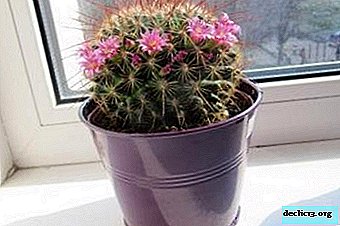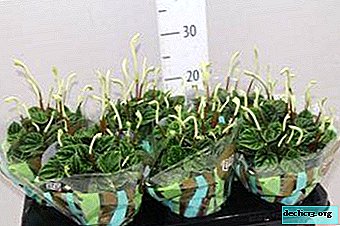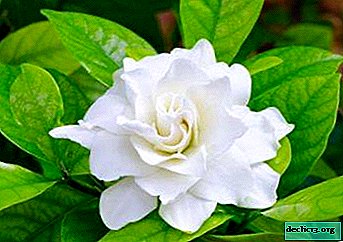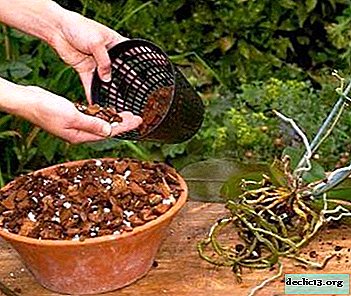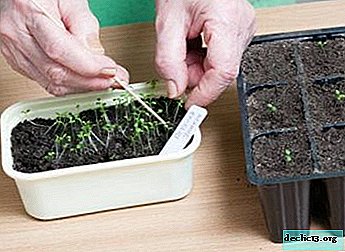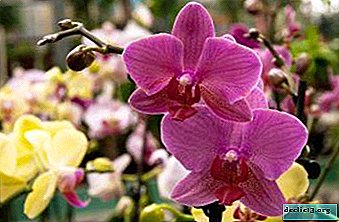Orchid roots have turned white: what is the reason and what needs to be done?
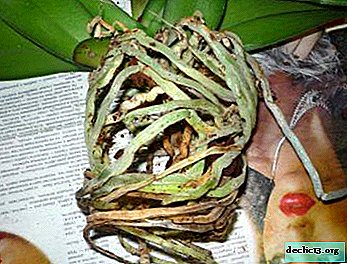
Orchid is an amazing flower. Being from exotic countries, it is quite difficult for her to adapt to the conditions of apartments. Of course, competent care is required, optimal conditions for growth and development. Otherwise, spots on the leaves begin to appear, the peduncle turns yellow, the roots dry and rot.
Next, we describe what are the criteria for healthy roots. What the strange color of vegetative organs says. What measures to save the plant to take if the flower dropped leaves.
What color does a healthy root system have?
It is the roots that are an important organ of plants, in particular orchids. They nourish the plant with liquid, minerals, participate in the process of photosynthesis. As you know, orchids have aerial and internal roots.
Note! The color change of certain rhizomes is a signal that you should pay attention to the plant.- Shades of healthy roots - light green, light gray, when moistened, the color becomes more saturated, dark green.
- Abnormal root color - brown, light yellow with a white coating.
I would like to add that the definition of the state of the root system exclusively in color is not correct. After all, the color may vary depending on the composition of the substrate, insufficient lighting, the use of mineral fertilizers, and natural features.
Healthy roots: dense, smooth, elastic. And if the root is easily squeezed by a finger, inside is hollow, soft or lethargic - soon it’s most likely inanimate.
What to do when changing the hue?
The most common causes of rhizome malaise are:
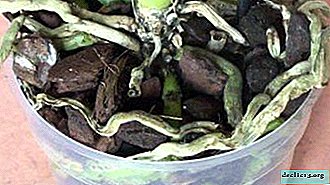 lack of life-giving moisture;
lack of life-giving moisture;- bad light;
- poor soil quality;
- inappropriate pot size;
- mechanical damage to the roots;
- temperature and humidity conditions do not meet the norm;
- use of hard water;
- infection damage;
- natural aging process.
Green
Green color indicates a healthy state of the plant. The root system performs its immediate functions: retaining the plant in the substrate, nutrition with moisture and trace elements, and also participates in the vital processes of gas exchange and photosynthesis. The light green color also indicates the emergence of new, young roots.
White
Such troubles happen when using unfiltered, hard water as irrigation. In this case, a significant amount of salts accumulates in the soil, which change its composition and prevent the penetration of air. That is why there is a white coating on the soil and rhizome.
Action taken:
- Rinse the potted flower under running water.
- Remove damaged root parts, if any.
- Change substrate.
- Moisten with exceptionally soft water.
Read more about why white plaque appears on orchid leaves and how to deal with it with home remedies, read here.
Brown
What could be the matter if the rhizome turned brown? Orchids need regular inspection. If the flower is planted in a transparent container, this is easy to do. When changing the color of the roots, it is worth paying attention to the conditions of the plant.
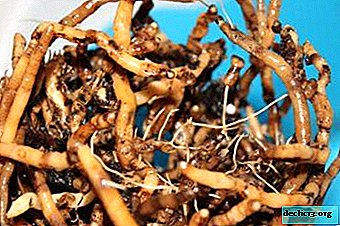 A brown color may appear if the roots are deep enough planted in the ground. The lack of light is thus reflected in the color of the root system. Also, it does not participate in the process of photosynthesis, as a result of which the pigment responsible for the green color is not produced.
A brown color may appear if the roots are deep enough planted in the ground. The lack of light is thus reflected in the color of the root system. Also, it does not participate in the process of photosynthesis, as a result of which the pigment responsible for the green color is not produced.Action taken:
- We extract the orchid from the flowerpot.
- Rinse the roots with warm running water.
- Let them dry.
- We cut off damaged areas, if any.
- We transplant the flower into a transparent pot.
- We place it in a well-lit place.
- As a result of an excess of fluid in the pot, rot diseases develop. Among which: root, gray, brown rot. Symptoms of the disease are the brown color of the roots, brown spots on the leaves, buds.
Action taken:
- Creating optimal comfort conditions for orchids.
- Separate a diseased plant away from healthy flowers.
- Remove damaged areas.
- Treat the soil and the plant with a 0.2% solution of the drug "Fundazole" or "Topsina", in this case, an effective method of immersing the pot in a chemical mixture.
- The procedure is carried out at least three times with an interval of 2 weeks.
The leaves are dry, but the roots remain green
If the orchid wilted, and the rhizome remained green, then what could be the reason and what should be done in such cases?
Note! The causes of leaf wilting may be incorrect growth parameters at home.- Quite common wilting due to cold air entering the leaves. Hypothermia also provokes the discharge of flowers and buds. But do not despair, this phenomenon is short-lived. Withered leaves, unfortunately, should not be treated. They should definitely be eliminated. The plant does not need a transplant. It is only worth moving to a warmer place and do not forget about regular hydration.
- The second reason is excessive moisture.while the orchid is damaged by rot, it begins to lose foliage. Leaves become soft, less resilient. They fall off the stem; as a result, the plant develops like a constructor. In this situation, you should:
 Extract flower from pot.
Extract flower from pot.- Rinse the roots under running water.
- Remove damaged areas, treat sections with an antiseptic.
- Leave to dry overnight.
- Transplant the orchid in a new soil and a good drainage layer.
- Water only after the soil has dried.
- With a fungal disease - fusarium wilting, the leaves dry and fall off very quickly (why the orchid dries and what to do to save it, read here, and how to treat the flower from mold on the roots, leaves and other parts of the plant, we talked about in this article). It is important to urgently take action:
- Creating optimal comfort conditions.
- Separate a diseased plant away from healthy flowers.
- Spray the remainder of the orchid and soil with an aqueous fungicide solution.
If the reason for the falling of the leaves could not be established, you need to place an orchid with healthy roots in a greenhouse. Maintain in it a temperature of + 25 ° C, humidity within 60-70%, intense lighting and regular watering with warm soft water. The process of growing green mass is not fast, so be patient and everything will work out.
Watch a video on how to transplant an orchid with rotten roots:
Try to inspect plants at least once a week. After all, the timely discovered and eliminated cause of the disease is a guarantee of the full recovery of the flower. Subsequently, the orchid will get stronger and will again delight with a unique, magnificent flowering.
Useful video
From the video you will learn how to distinguish healthy orchid roots from rotten ones:

 lack of life-giving moisture;
lack of life-giving moisture; A brown color may appear if the roots are deep enough planted in the ground. The lack of light is thus reflected in the color of the root system. Also, it does not participate in the process of photosynthesis, as a result of which the pigment responsible for the green color is not produced.
A brown color may appear if the roots are deep enough planted in the ground. The lack of light is thus reflected in the color of the root system. Also, it does not participate in the process of photosynthesis, as a result of which the pigment responsible for the green color is not produced. Extract flower from pot.
Extract flower from pot.
